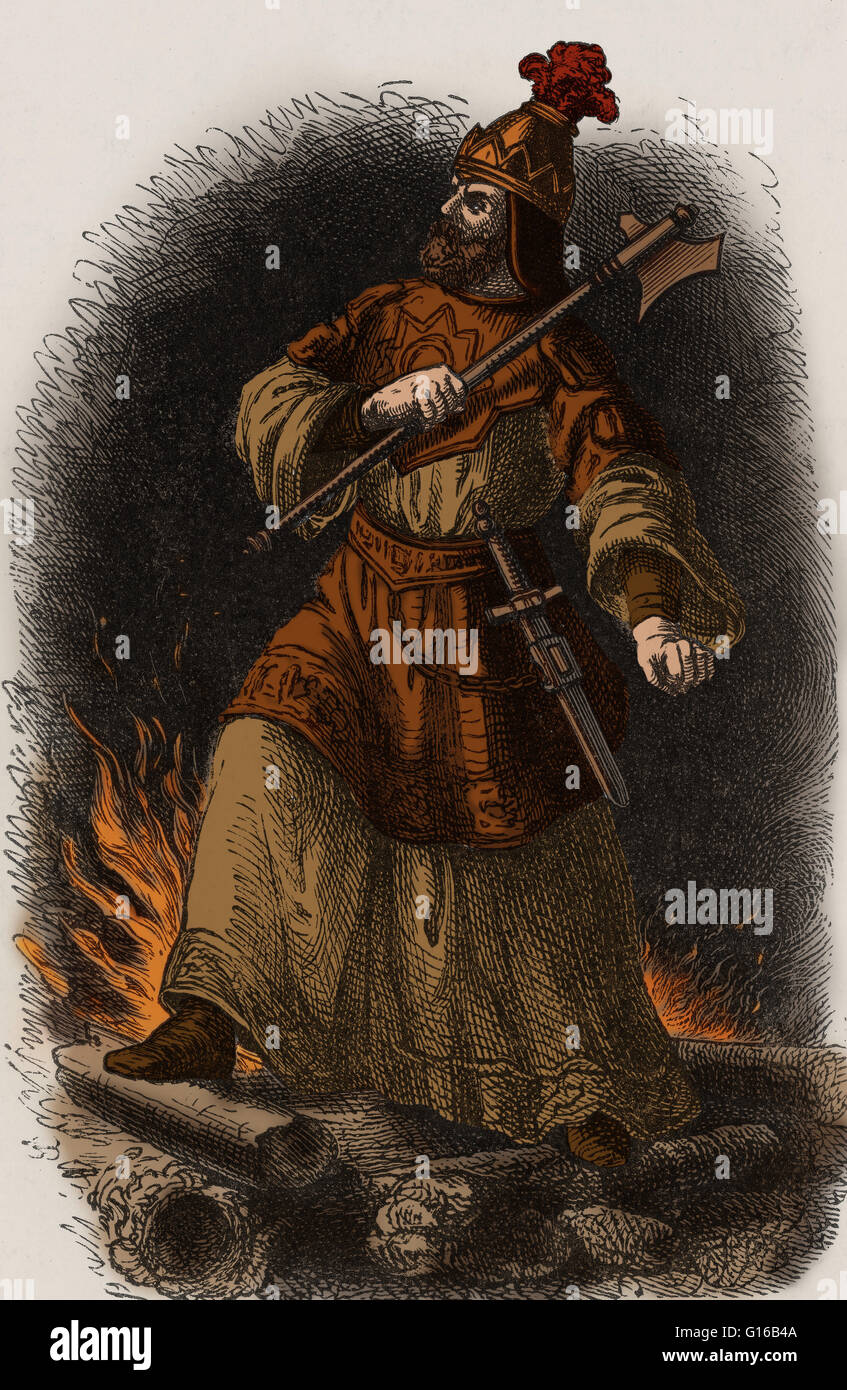Called the Scourge of God (flagellum dei) by the Romans, Attila the Hun (born 406 AD) was king and general of the Hun empire from A.D. 433 to 453. Attila's first order of affairs was to unite his subjects for the purpose of creating one of the most formid

Image details
Contributor:
Science History Images / Alamy Stock PhotoImage ID:
G16B4AFile size:
32.5 MB (3.2 MB Compressed download)Releases:
Model - no | Property - noDo I need a release?Dimensions:
2720 x 4172 px | 23 x 35.3 cm | 9.1 x 13.9 inches | 300dpiPhotographer:
Photo ResearchersMore information:
This image could have imperfections as it’s either historical or reportage.
Called the Scourge of God (flagellum dei) by the Romans, Attila the Hun (born 406 AD) was king and general of the Hun empire from A.D. 433 to 453. Attila's first order of affairs was to unite his subjects for the purpose of creating one of the most formidable and feared armies Asia had ever seen. In 441 Attila's Huns attacked the Eastern Roman Empire. The success of this invasion emboldened Attila to continue his westward expansion. Passing unhindered through Austria and Germany, Attila plundered and devastated all in his path. In 451, having suffered a setback on the Plains of Chalons, by the allied Romans and Visigoths, Attila turned his attention to Italy. After having laid waste to Aquileia and many Lombard cities in 452, the Scourge of God met Pope Leo I who dissuaded him from sacking Rome. On the night of his wedding Attila passed out flat on his back and had a massive nosebleed which caused him to choke on his own blood.